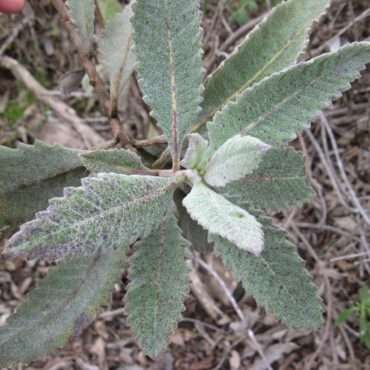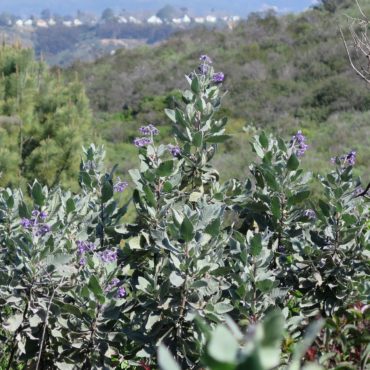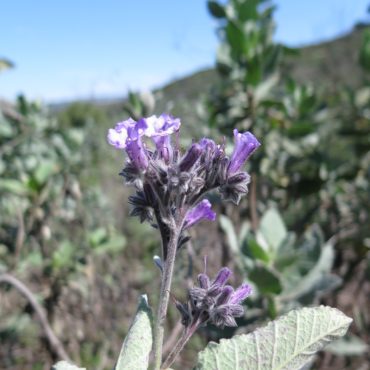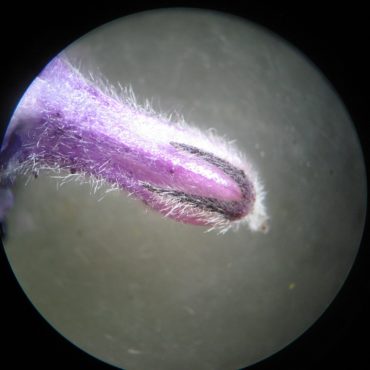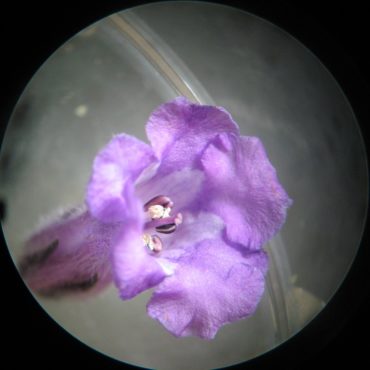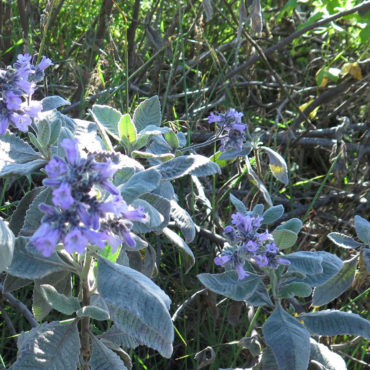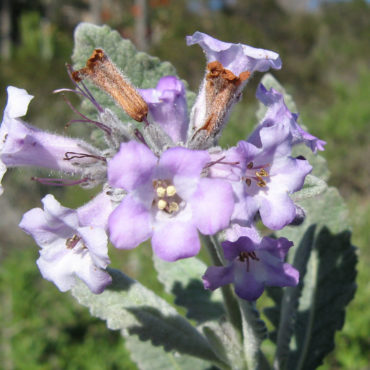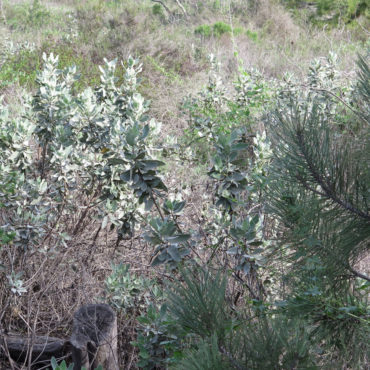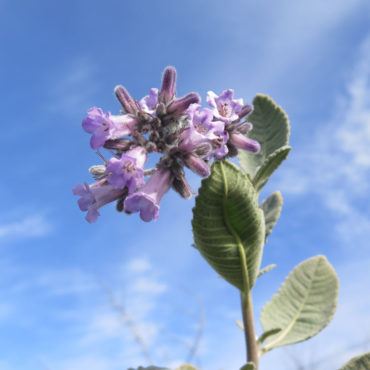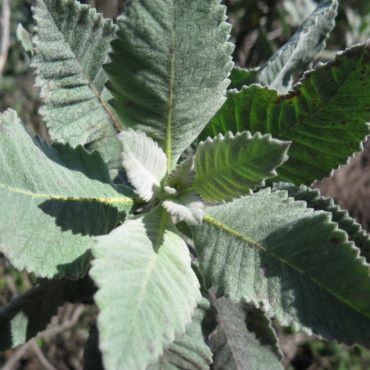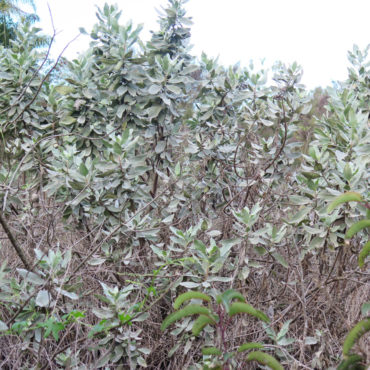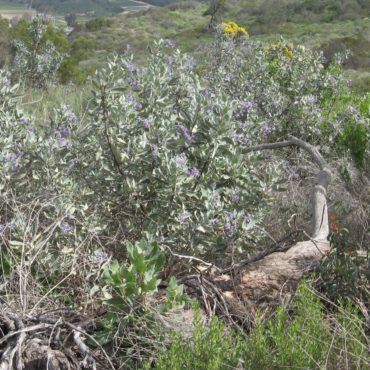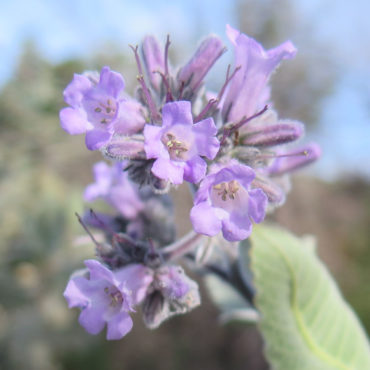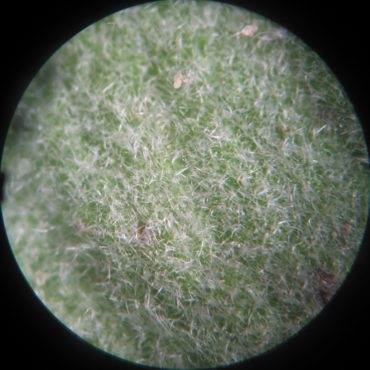Felt leaved yerba santa (Eriodictyon crassifolium) is an open shrub with large, wooly leaves and attractive clusters of lilac flowers. It can reproduce underground stems, producing dense patches.
This is one of several species of Eriodictyon often simply called “yerba santa”. The common name comes from the Spanish padres and means holy herb. As this suggests, these species of yerba santa have impressive medicinal uses. Native Americans made a tea or syrup of the leaves for treatment of respiratory illnesses, coughs and fevers, or they made a poultice for external ailments. Similar uses are advised today by modern herbalists.



